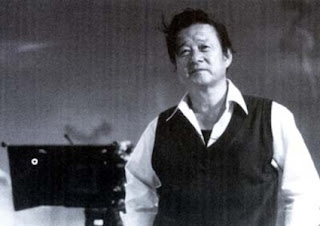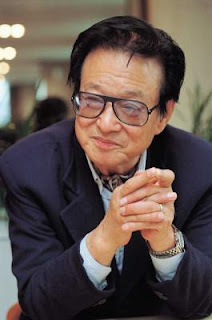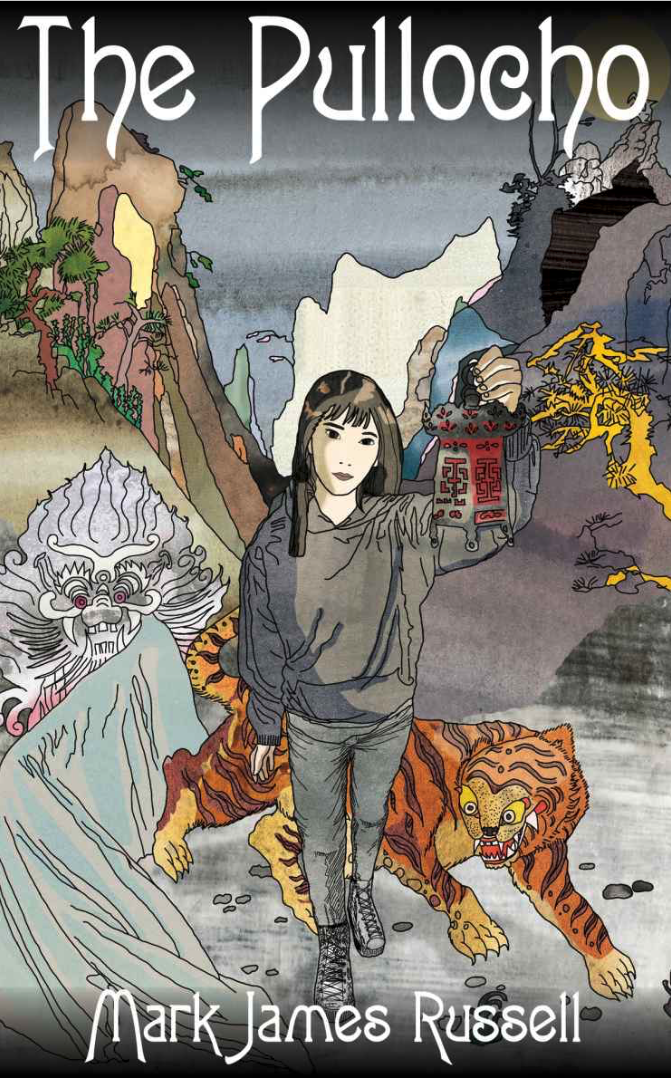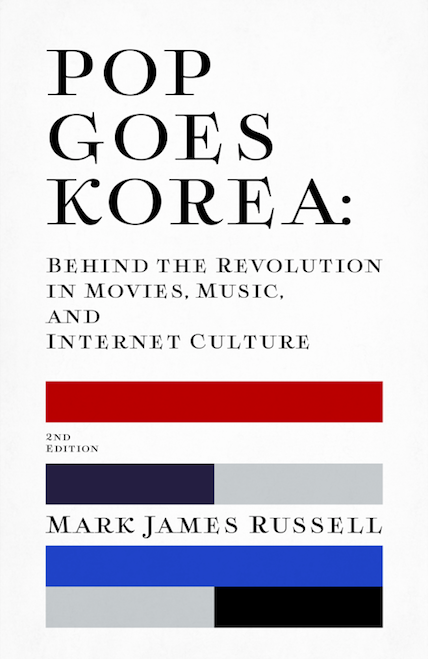CJ Entertainment is releasing its big summer blockbuster on Wednesday, a $10 million saga recounting the Gwangju Massacre of 1980 called MAY 18. The Korean title, HWARYEOHAN HYUGA (or “Splendid Vacation”), refers to the code name the military had for their operations in Gwangju at the time.
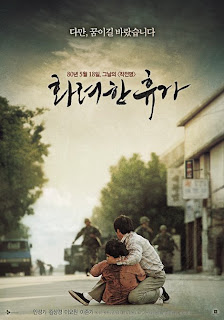
The Gwangju Massacre (also called the Gwangju Uprising) has been tackled several times in the media, mostly in the 1990s. The most significant was probably in Kim Jong-hak and Song Ji-nah’s television series SANDGLASS, which was one of the highest-rated television shows of all time. In movies, there was Jang Sun-woo’s A PETAL, Lee Chang-dong’s PEPPERMINT CANDY (probably the best one, although I found it a bit too fatalistic for my liking)… And in the early 1990s, there were films with a more political approach, such as the Changsan Gotmae group’s O GUMUINARA (Oh Dreamland) in 1988, Kim Tae-yeong’s HWANGMUJI (The Wasteland) in 1990 and Lee Chung-gook’s BUHALUI NORAE (Song of Resurrection) in 1991.
Anyhow, this version of the Gwangju Uprising story is rather different than all of those. In fact, MAY 18 is pretty much completely apolitical. Instead, it focuses on spectacle and a few interpersonal relationships of some people caught up in the upheaval. Rather like TITANIC, really. Only less political. And less subtle. And less accurate.
The basic set-up of the film is basically fine — protesting students get beaten badly by soldiers, leading to a general uprising of the people of Gwangju.
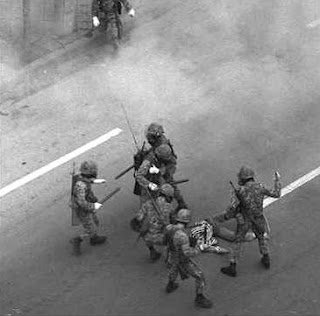
And I was really impressed by the re-creation of Gwangju in 1980. Not that I was there then. But Gwangju was the first city where I lived in Korea, back in 1996, and many of the events of the movie take place on the same streets I walked. The YMCA is still there, the main intersection in front of city hall. The whole historical look of the movie was my favorite part.
Coincidentally, 1996 was also the year that former presidents Chun Doo Hwan and Roh Tae Woo were put on trial for treason, mutiny and graft. Their trials were inexorably linked to the Gwangju Massacre, and pretty much every day of the trial there were riots down in Gwangju. Big riots. With plenty of tear gas. So watching the events unfold in MAY 18 was really evocative for me, almost hauntingly so.
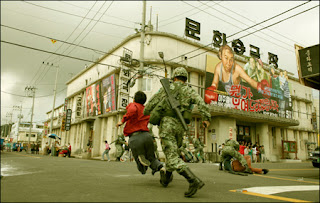
But the first big showdown on May 20 — the main set piece of the film — is way off. At least as far as I know, the military’s attacks at City Hall featured mostly bayonets and clubs (lots of good information at GUSTS OF POPULAR FEELING, here and here). Just a few shots were fired that day.
But in MAY 18, you get a gigantic hail of gunfire, mowing down hundreds. Considering how the director has said his whole reason for tackling this subject was to educate the younger generation about what happened in Gwangju in 1980, that excess is pretty disappointing.
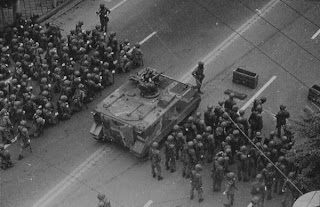
Of course, hundreds of people who die at Gwangju, many of them by gunfire, but the bullets were not really flying until a few days later when the military retook the city.
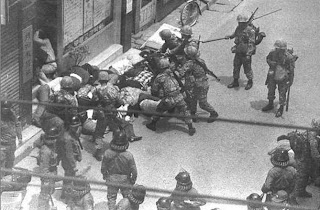
That exaggeration, though, is in keeping with the generally shallow portrayal of events. Although the movie tries hard to be apolitical, its understanding of events and motivations is quite shallow: soldiers=evil, Gwangju people=good. Like watching a STAR WARS movie.
One thing that really leapt off the screen at me was just how cliche and simple the story was. Just like WELCOME TO DONGMAKGOL, in terms of having happy, apolitical villagers living their innocent, happy lives, when suddenly they are set upon by evil forces beyond their control. Which makes me wonder how much of DONGMAKGOL was anti-American and how much was just crappy writing.
(On the other hand, if you like that sort of writing, you need not wait long for more — the movie version of THE BRIDGE AT NO GUN RI looks like it will be more of the same when it is released in October).
I also found the movie a little confusing. Considering how director Kim Ji-hoon said that he wants the movie to educate younger people who do not know about the Gwangju Massacre, that is a little disappointing, too. As a fan of history, I am all for examining the past, warts and all. I just wish Korean artists showed an interest in looking at the past with more subtlety and insight.
To be honest, I have no idea how well this movie is going to be received by people in Korea. CJE is convinced it will open big (thanks to its usual huge advertising blitz, the kind of thing that CJ is great at), but how the movie sustains in subsequent weeks will determine how it ends up performing. Much like THE HOST last year, I could see MAY 18 piggybacking off of Hollywood fatigue and capturing much of the local box office. Who knows?
(Btw, many of the historical photos here come from the POPULAR GUSTS blog, with many thanks).
UPDATE: I just found Don Kirk’s article about the Gwangju Massacre, his memories of those events and the movie here. He was one of the journalists there, and you can even see him in a couple of photographs from the period.


